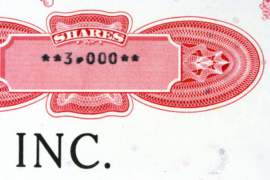
Financial Aide

What is Financial aide?
Financial aide consists of government assistance to citizens of the United States to help pay for post-secondary education including bachelors degrees, graduate and professional degrees and for other forms of continuing education. Financial aide in the United States can take many forms including grants, scholarships, loans, tax credits and deductions, and work study programs.In the United States, every year there are upwards of $160 billion allocated by the federal and state governments for financial aide to deserving students. This includes $110 billion from the federal government in the form of grants and loans; $10.2 billion from State based financial aide; and $6.8 in federal tax credits and deductions.
How do I apply for financial aide?
In order to get money from the federal government you will need to apply for financial aide by filling out a FAFSA form. This form serves the purpose of putting the federal government on notice of your need for financial aide; what forms of financial aide you may need; and what financial aide you will qualify for.
The FAFSA form, or Free Application for Federal Student Aide may be downloaded and printed from the United States Department of Education website by going to www.fafsa.ed.gov. The FAFSA form is a free application provided by the United States Department of Education that allows the federal government to assess whether or not an applicant for student aid, either in the form of grants or loans, is eligible to recieve funding from the United States government for their education. The FAFSA form is used for all forms of funding for post-secondary education including: bachelors degrees, masters degrees, juris doctors, among others.
The FAFSA form will require you to input information including your income,and if you are a dependent, your families income; the cost of attendance of the educational institution; your status as a full time or part time student; and whether you will be attending post-secondary education for the whole year or on a semester basis.
By filling out the FAFSA form, the department of education will properly be able to assess your need based on your, and your families, income. The eligibility under FAFSA will also analyze your expected family contribution which is calculated based on your household income, number of students from the household in college, and your families net assets (not including 401ks).
What kind of federal financial aide can I be eligible for?
Your FAFSA form will allow you to apply for numerous kinds of loans and grants that are funded by the federal government. These include Pell Grants, Federal Supplemental Educational Opportunity Grants, Perkins Loans, Stafford Loans, PLUS loans, and Federal Work Study programs.
A Pell Grant is a form of financial aide furnished by the United States Department of Education that helps students who could not normally afford the luxury of a secondary education, the opportunity to attend college or, in some cases, post-bachelors degree education. The federal Pell Grant helps 5.4 million individuals pay for college every year through the United States Department of education, which allots $17 billion a year towards the funding of Pell Grants. Grants, unlike loans, never have to be repaid to the federal government.
Prior to the 2011 amendments, Pell Grants would issue a maximum of $5,550 dollars per student in financial aide. As of the 2011 amendments a student who meets the hardship requirements and is given Pell Grants may receive $4,705 in financial aide. The amendment stripped funding from the department of education by $5.7 billion and due to that there has been a decrease in per student funding of $845 per student, with some students losing their status altogether.
If the funding from a Pell Grant is not enough to meet your financial aide requirements you may also use your FAFSA form to apply for Stafford loans.
Stafford loans are forms of financial aide that are sponsored by the federal government through lending institutions. The way they work is that you apply for a loan, through FAFSA, and upon your approval you will be allotted a certain amount of financial aide for you education. The benefit of taking Stafford loans is that they are guaranteed by the federal government . In that way the lending institution is going to allow you a lower interest rate because you are backed by the United States government, which is as close to a guarantee of repayment as anything.
There are two main types of Stafford loans. The first are subsidized and the second are not. The subsidized loans are the first type you will want to get from the federal government’s department of education, through Sallie Mae. The amount that will be allotted per student through subsidized loans is low, but usually allows around $12,000 per year. The benefit of these loans is that they do not garner interest until the completion of your education. Federal Stafford Loans are subsidized in that the interest that accumulates while you are pursuing your education is payed for by the federal government. or example, if you borrow $36,000 over 3 years for your college education starting in 2011 you will not be charged interest for the school years ending in 2012, 2013, and 2014., but upon your graduation in 2014, or if you leave your educational institution before graduation, then your interest will start accumulating immediately.
In contrast, unsubsidized Stafford oans through the federal governments department of education will begin accumulating interest upon the time that your loans are dispersed to you. Because of this reason it is always beneficial for students to avoid unsubsidized loans through either the federal government department of education or through a private lending institution.
The interest rates that are associated with stafford loans are relatively low. Due to the guarantee of repayment by the federal government a lending institution will charge a lower interest rate and the loan is almost guaranteed to be granted if you meet the requirements. Under c.urrent regulations the annual percentage rate of interest for a federal subsidized stafford loan is 6.6% annual interest for those students who are enrolled in higher education for at least half time. This is going to change under the 2011 amendments under the Budget Control Act of 2011. Under the Budget Control Act new, starting in July 2012, interest rates for both federally subsidized and unsubsidized stafford loans will be fixed at 6.8% annual interest. In addition, under the Budget Control Act, individuals who are seeking graduate or professional degrees will be ineligible for subsidized loans as of July 1, 2012.
Upon the completion of your education you will be required to repay your stafford loans. Upon graduation, or dropping below half-time, you will be allotted an initial deferment of 6 months. This is called the grace period. During the grace period you will not be required to begin repaying your loans, however, the interest upon your loans, even those that are subsidized will begin to take effect. Once your 6 month grace period is over you will be required to start paying monthly installments to satisfy your loans. The default standard is repayment over a 10 year period. This may be altered upon request and many times you will be permitted to stretch your repayment period up to 30 years. Granted, you will end up paying more in the long run but it is beneficial for those individuals right out of college who are not making a high salary. Once the grace period is over you must begin repaying your stafford loan. Failure to do so will put you in default and prevent you from receiving future government loans and severely damage your credit. If you are in a situation where it is impossible for you to make payment then you may apply to the federal government for a deferment based on hardship.
A Perkins Loan operates in much the same way as a Federally subsidized stafford loan in that it is a subsidized loan guaranteed by the federal government. The difference is that where a stafford loan operates by going through a private lending institution to gather funding for the loan, a Perkins Loan takes its funding directly from your educational institution. So the federal government is borrowing money from your university and guaranteeing repayment upon graduation, or the dropping of the student from at least half time status. Federal Perkins loans have an interest rate of 5% per year that begins to accumulate at the time of graduation, or dropping below half time registration. A Perkins Loan, through completion and approval of a FAFSA form, will guarantee an undergraduate student as much as $5,500 per year with a lifetime allowance of $27,500; and post-graduate, and professional, students up to $8,000 per year with a lifetime allowance of $60,000.
Federal PLUS loans are unsubsidized federal financial aide which cover the cost of education. Federal PLUS loans can be used for undergraduate, graduate, and professional educations; with different Federal PLUS loan applications for each one. A federal PLUS loan can cover the entire cost of your education and, theoretically, you can borrow unlimited financial aide through Federal PLUS loans. A federal PLUS loan has a fixed interest rate of 7.9% and a 4% origination fee. The origination fee acts as an activation fee for the loan. This means that if you take a loan for $100,000 you will be charged $4,000 initially and will only receive $96,000 but still be liable to repay the full $100,000 with capitalized interest.
In addition to loans and grants a student may apply for federal work study programs. Federal work study is a form of financial aide that allows a student to work in the community or in their field of study part time in conjunction with their education to help pay for their education. A student who meets the financial needs requirements may be placed in a federal work study program in which the federal government will pay up to 75% of the salary that the student garners through their work study program.
What State based financial aide am I eligbible for?
The federal government is not the only source of financial aide that a student can apply for. State based financial aide accounts for $10 billion dollars in annual financial aide. Every state has different rules involving the qualifications and types of financial aid that they offer. Most states offer reciprocity with other states based on financial aide. This means that if you qualify for a specific amount of financial aide while residing in one state and then subsequently move to another state, even if under the new states rules you would not qualify for financial aide, the new state would allow you to qualify for financial aide based on reciprocity with the other state. Every state is different and you should go to www.fafsa.com/student-financial-aid to find out more about your specific states financial aide opportunities.
Are there any tax benefits associated with financial aide?
Direct payments from the federal and state governments are not the only benefits that you can receive through financial aide. You can also be eligible for certain tax deductions and credits through your income tax return. Financial aide in the form of tax deductions and credits account for $6.8 billion in financial aide yearly. There are a number of different types of tax credits and deductions that you may be eligible for, including The Lifetime Learning Tax Credit; The Tuition and Fees Deduction; and Student Loan Interest Deduction.
The Lifetime Learning Tax Credit is a form of financial aide that takes the form of up to $2,000 in yearly tax credits. In order to qualify you do not need to pursue a degree. The Lifetime Learning Tax Credit allows, even individuals taking one class, to qualify for the credit. In addition you must be a United States citizen and your modified adjustment gross income must be below $60,000 or $120,000 if you are married and file a joint income tax return. The credit is non-refundable, in that the credit only applies to the tax you owe. In other words, even if you qualify for $2,000, if you have $1,000 that you owe to the federal government you can only get a credit of $1,000 and may not carry over the difference to the following tax year.
You can also qualify for the Tuition and Fees Deduction allows for up to $4,000 in annual tax deduction on your federal income tax return. In order to qualify you must have a modified adjustment gross income of less than $80,000 or $160,000 if you are married and filing a joint tax return. You may not use the Tuition and Fees Deduction if you are also using the Education Tax Credit; if you are married and filing separately; or you have deducted expenses for tuition and fees through some other form of legal tax deduction.
Another form of financial aide through the use of tax returns is the Student Loan Deduction. The Student Loan Deduction will allow you to deduct your student loan payments from your federal income tax. In order to qualify your modified adjustment gross income must be lower than $75,000 or $150,000 if you are married and filing jointly. If you are married and filing separate tax returns you will not qualify.
NEXT: Pell Grant





















